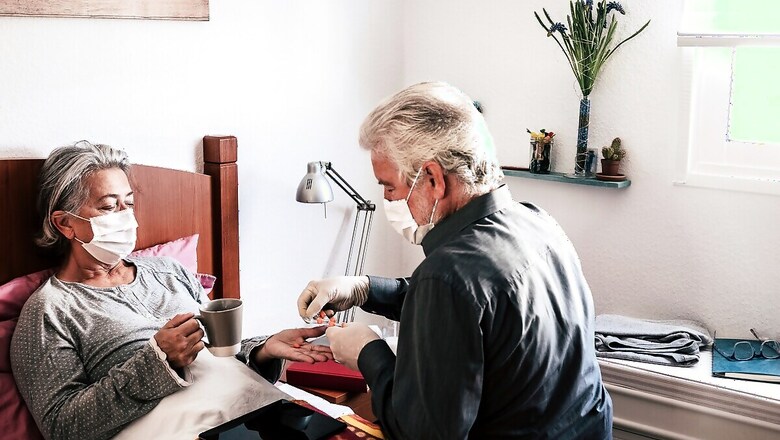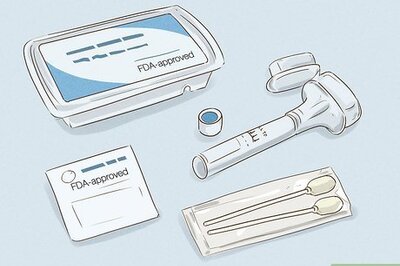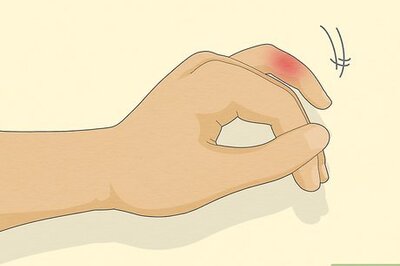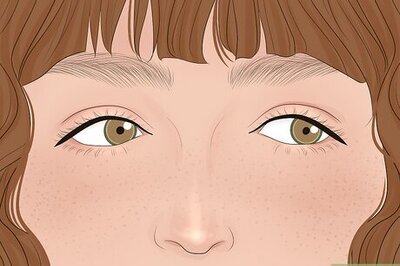
views
COVID-19 is an infectious disease caused by the recently discovered coronavirus. The COVID-19 virus spreads primarily through droplets of saliva or discharge from the nose when an infected person coughs or sneezes. The virus enters the body via nose, mouth and eyes. Some recent studies suggest that virus may be airborne and can be spread through fine infected droplets that remain suspended in the air in closed air-conditioned environments of offices, AC cabs-buses, shopping malls and theatres due to absence of cross-ventilation, even when you are not in direct contact with an infected person. A lot of people with mild symptoms home quarantine.
Home treatment – Do’s:
- Stay at home all the time, unless there is a medical reason for travel.
- Practice good hand hygiene. Wash your hands for more than 20 seconds, including in between your fingers and under fingers and under your nails using plenty of soap and water. Otherwise, use an alcohol based sanitizer with more than 60% alcohol. Do this frequently, especially before you eat, after you use the restroom, blow your nose or cough, or before you touch your face.
- Cover your cough and sneeze. The best way to cough or sneeze is into your elbow.
- Stay in separate room with door closed. Use separate bathroom.
- Wipe all surfaces i.e. doorknobs, countertops, stairway railings and switches, you come into contact with. Any bleach-containing household product is effective.
- Wipe your phone with disinfectant wipes or 70% isopropyl alcohol as it touches your hands and your face often.
- Wash your hands thoroughly after handling cash or credit cards as their surface may have virus.
- Wear a facemask if you step out of your room or if someone enters your room.
- Wash your hands before you wear your mask. Only touch ear loops.
- Protect your immune system by consuming balanced diet, staying hydrated, avoiding alcohol, getting enough sleep and maintain healthy weight.
- Daily monitor symptoms such as dry cough, shortness of breath, fever >102 F, loss of taste & smell. It is good to have a finger pulse oximeter at home to monitor oxygen saturation.
- Seek medical advice for chemoprophylaxis for your family members.
Home treatment – Don’ts:
- Don’t panic.
- Don’t visit public areas. Don’t use public transport.
- Don’t shake hands or hug. Use an alternative greeting maintaining 6-8 feet distance.
- Don’t touch your eyes, nose, mouth or face without washing your hands.
- Don’t share water, utensils, towels or bedding with family members.
- Don’t visit older relatives or community members, as they are most vulnerable. Discourage visitors.
- Don’t discontinue self-quarantine until instructed.
Home treatment – Instructions for Caregivers:
Mask: The caregiver should wear a triple layer medical mask appropriately when in the same room with the ill person. Front portion of the mask should not be touched or handled during use.
If the mask gets wet or dirty with secretions, it must be changed immediately. Discard the mask after use and perform hand hygiene after disposal of the mask.
Hand hygiene: It must be ensured following contact with ill person or his immediate environment. Hand hygiene should also be practiced before and after preparing food, before eating, after using the toilet, and whenever hands look dirty. Use soap and water for hand washing at least for 40 seconds. Alcohol-based hand rub can be used, if hands are not visibly soiled.
After using soap and water, use of disposable paper towels to dry hands is desirable. If not available, use dedicated clean cloth towels and replace them when they become wet.
Exposure to patient: Avoid direct contact with body fluids of the patient, particularly oral or respiratory secretions. Use disposable gloves while handling the patient. Perform hand hygiene before and after removing gloves.
Avoid exposure to potentially contaminated items in his immediate environment (e.g. avoid sharing cigarettes, eating utensils, dishes, drinks, used towels or bed linen).
Food: It must be provided to the patient in his room. Utensils and dishes used by the patient should be cleaned with soap/detergent and water wearing gloves. The utensils and dishes may be re-used. Clean hands after taking off gloves or handling used items.
Use triple layer medical mask and disposable gloves while cleaning or handling surfaces, clothing or linen used by the patient. Perform hand hygiene before and after removing gloves. The care giver will make sure that the patient follows the prescribed treatment.
The care giver and all close contact should self-monitor their health with daily temperature monitoring and report promptly if they develop any symptom suggestive of COVID-19 (fever/cough/difficulty in breathing/ loss of smell and taste).
If care giver suffers with any of these symptoms, he/ she should consult to physician immediately who will guide you for COVID testing and treatment if required.
You may contact 0124-4834566 for Medanta Home care package.
References:
• Ministry of Health & Family Welfare Guidelines
• WHO guidebook for Support for Rehabilitation Self-Management after COVID19- Related Illness
• US- Centre for disease Control (CDC)
Read all the Latest News, Breaking News and Coronavirus News here. Follow us on Facebook, Twitter and Telegram.



















Comments
0 comment